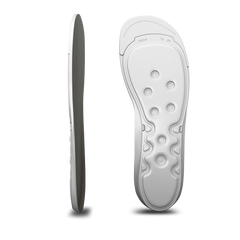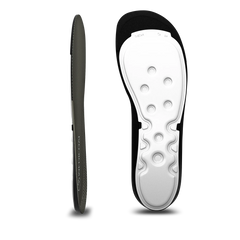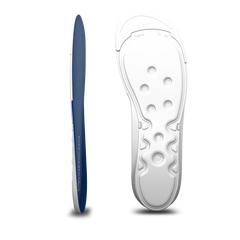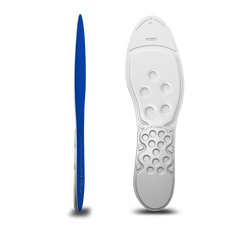Fallen Arches: Step-by-Step

Flatfeet, also known as flat footedness or fallen arches, is a common orthopedic problem affecting many people worldwide. A fallen arch is a deformity where the longitudinal or transverse arch, sometimes both, collapses. The cause of fallen arches can be congenital or acquired.
Causes of flat footedness vary
Causes of flat footedness vary, with the most common being as follows:
- Genetic predisposition - congenital weakness of ligaments and tendons.
- Excessive foot load - often associated with being overweight or obesity.
- Injury - such as ligament damage.
- Aging - as tendons and ligaments weaken with age, it may lead to the arch collapsing.
- Rheumatoid arthritis and other systemic diseases.
Symptoms of Flat Footedness
The main symptom of flat feet is a change in the shape of the feet. Other symptoms may include:
- Foot pain, especially in the arch and heel area.
- Rapid foot fatigue.
- Knee and hip pain due to changes in gait.
- Difficulty walking or engaging in sports.
Diagnosis
The diagnosis of flat footedness typically begins with a physical examination and may include X-rays. Treatment depends on the cause and severity of the condition.
The arch is primarily held in the correct position by the muscles and tendons in the foot.
Genetically, we are adapted to walk barefoot on hard and uneven surfaces, where the muscles and tendons of the feet are evenly stressed. Today, we mostly walk on flat surfaces and in tight shoes, often with a fixed foot support, which are insoles with a raised arch. Wearing shoes with insoles that have a raised arch results in the weakening of the tendons and muscles of the feet. The uneven load on the feet causes the arch to drop, and we start to experience foot pain. This uneven load on the surface of the feet, along with constant strain and pressure are directly related to a reduction in blood circulation in the feet, as the vessels and capillaries are compressed by the weight. The cells thus lose their energy supply and simply get tired. The feet, having lost part of their load-bearing capacity, collapse, and pain ensues.
The sensory water wave therapy in Medicovi H20 orthopedic inserts provides effective pain relief with each step. The compression during each step causes pressure waves of water in the Medicovi inserts that helps correct the movement of the heel, muscles, and tendons of the feet, as well as a series of small vertical movements. These movements naturally relieve pain from the heel to the tendons and muscles. These vertical movements also increase the elasticity of the feet.
These movements also greatly improve blood circulation. With increased blood circulation, the energy supply to the heels and the rest of your feet increase. Active movement of the tendons and muscles of the feet using water wave therapy with Medicovi inserts is an effective method for alleviating or completely eliminating pain in the heels as well as the feet, ankles, knees, hips, and back.
To treat and alleviate the symptoms of fallen arches, specific exercises to strengthen and improve the flexibility of the feet and legs can be very effective. Here are some exercises that are usually recommended:
Exercises to Strengthen the Arch
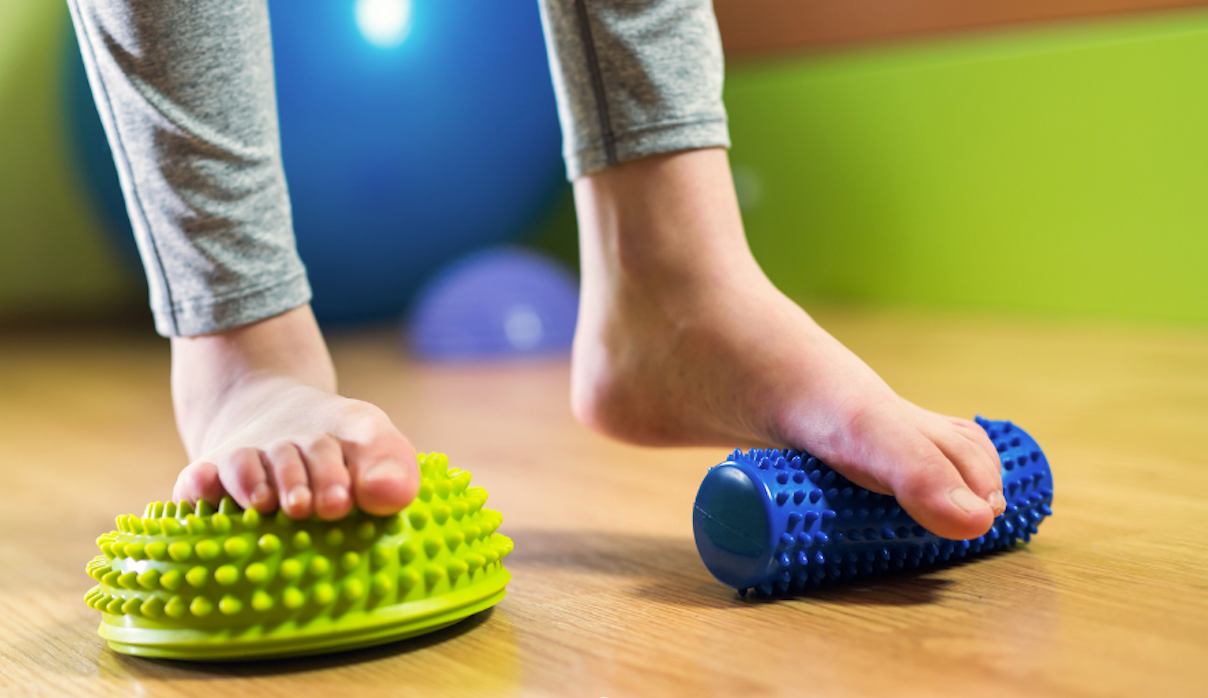
- Find a comfortable place where you can sit or stand, and secure a small object, such as a ball or a rolled-up towel. Try varyious objects - for example, use a smaller or larger ball to increase the difficulty. If sitting, place your feet flat on the floor. If standing, ensure that you stand straight up and your weight is evenly distributed on both feet.
- Place the chosen object on the floor in front of your feet. Using your toes, try to grab the object and lift it off the ground. Hold the object lifted with your toes for a few seconds, then slowly place it back on the floor. Repeat this exercise several times, ideally 10-15 repetitions for each foot.
Benefits of this exercise: Strengthens the muscles of the longitudinal arches of the feet. Improves flexibility and mobility of the toes. Helps increase overall stability and balance. And can help alleviate pain associated with fallen arches.
Heel and Achilles Tendon Stretch
Stretching the heel and Achilles tendon is an excellent exercise for those suffering from pain and stiffness in the heel and lower leg area. This exercise is particularly beneficial for people with flat feet (fallen arches), and/or those prone to Achilles tendon issues.
- Find a flat wall and stand facing it, about one foot away from the wall. Step forward with your right foot. Make sure your right heel is close to the wall.
- Bend your right knee while the left leg remains straight and the heel of the left foot stays pressed to the ground. The knee of the left leg should point straight forward.
- Move your hips towards the wall to feel a stretch in the back of the left leg, especially along the tendon and heel. Hold this position for 15 to 30 seconds.
- Return to the starting position and repeat the exercise with the other leg forward.
- Repeat the exercise at least 2-3 times for each leg.
Toe and Heel Walking
Walking on your toes and then on your heels is a simple but effective exercise that can significantly contribute to strengthening the muscles of the feet and calves. This exercise is particularly useful for individuals suffering from fallen arches, as it helps to improve muscle tone and support in the foot.
- Find a flat, firm, and sufficiently large space to walk where you won't have any obstacles.
- Start by standing straight, feet shoulder-width apart. Slowly rise onto the balls of your feet, trying to extend as much as possible.
- Walk on your toes for 15 to 30 seconds, or for a certain distance (for example, the entire length of the room). While walking, keep your back straight and try to evenly distribute your weight on both feet.
- Return to the starting position. Lift your toes and walk only on your heels. Try to maintain balance while doing this.
- Similarly to walking on your toes, continue walking on your heels for 15 to 30 seconds, or for a certain distance.
- Repeat this cycle (walking on toes and then on heels) several times, ideally 3 to 5 times. You can perform this exercise daily or as part of your regular exercise program.
Benefits of this exercise: Muscle strengthening makes the muscles in the feet and calves stronger, which is particularly important for people with flat feet or weakened arches. Walking on toes and heels requires good balance and coordination, which helps improve overall body stability. These exercises can also improve the flexibility and mobility of the foot.
Exercises with Resistance Bands
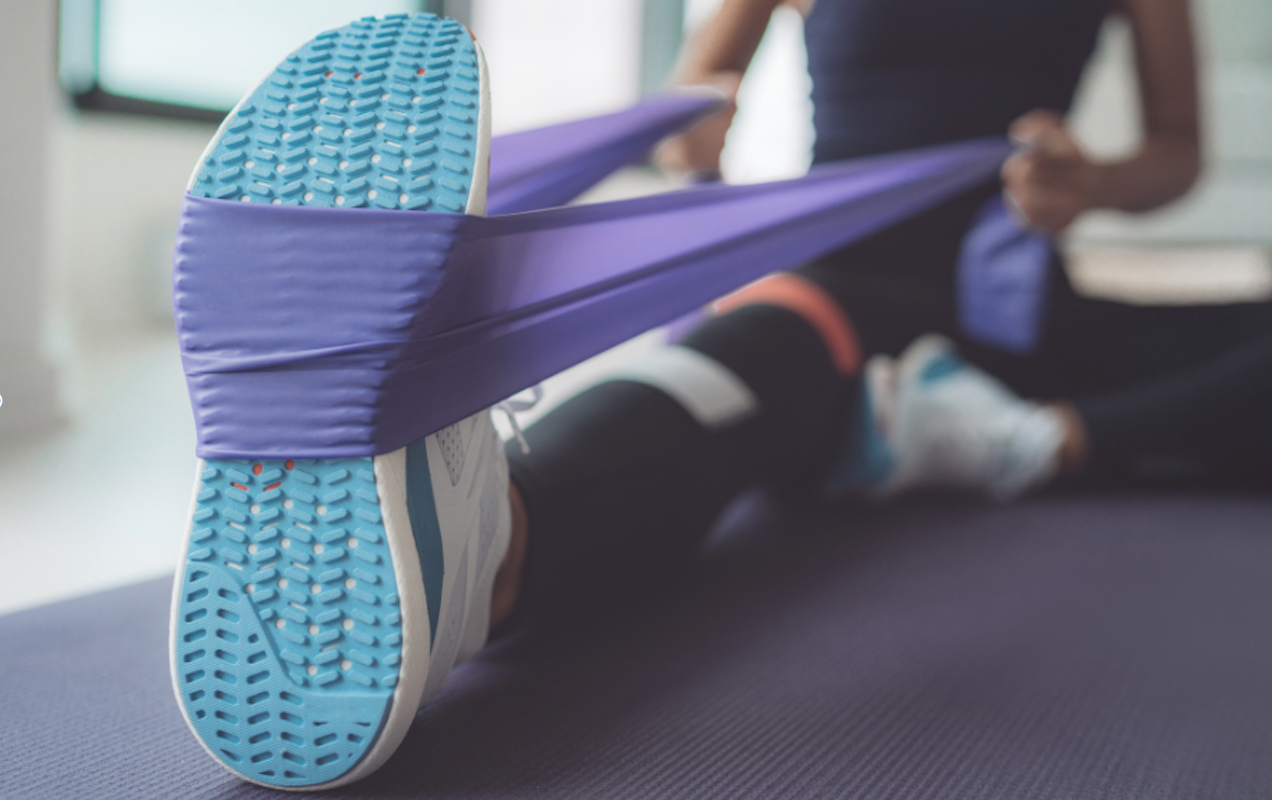
Exercises with resistance bands are an effective way to strengthen the muscles of the feet and ankles, which are key in treating and preventing problems associated with fallen arches, as well as in improving overall stability and flexibility of the feet. This type of exercise can be very beneficial as it provides targeted resistance, helping to strengthen specific muscle groups.
- Choose a resistance band or therapeutic elastic band with an appropriate level of resistance. There are different resistance levels, softer bands are suitable for beginners.
- Sit on a chair or on the ground with your legs stretched out in front of you. Place the band around the front part of one foot, just above the toes. Hold the end of the band in your hands or attach it to a firm object if possible.
- Try to pull the toes of your foot towards you against the resistance of the band. Hold this pull for a few seconds (approximately 3-5 seconds), then slowly release the tension and return the toes to the starting position.
- Repeat the exercise 10-15 times. After completing a set of exercises on one foot, move the band to the other foot and repeat the exercise. You can perform this exercise daily or as needed as part of your exercise routine.
Benefits of this exercise: Strengthening of the feet and ankle muscles is important for maintaining proper posture and balance. Improving the flexibility and mobility of the feet helps to prevent injuries and supports recovery from various foot conditions, including fallen arches.
Foot Rolling
Foot rolling involves using a tennis ball or a special massage roller and is an effective method for relieving tension and stiffness in the feet. It is particularly beneficial for people with foot pain, fallen arches, or those who spend a lot of time on their feet. This exercise provides a gentle, yet effective massage that can help alleviate pain, improve circulation, and increase foot flexibility.
- You can use a tennis ball, a small massage roller, or another similar object suitable for a foot massage.
- Sit on a chair or the edge of a bed where you can comfortably reach your feet. Place your feet flat on the floor. Place the tennis ball or massage roller on the floor and position the sole of one foot on top of the aid.
- Slowly start to roll (or glide) the object under the foot from the heel towards the toes and back. Apply adequate pressure to feel a pleasant massage but avoid painful or uncomfortable areas.
- Continue rolling for about 2 to 5 minutes on each foot. If you find areas of greater tension or stiffness, focus on these spots longer and apply slightly more pressure.
Benefits of this exercise: Helps to release tension and stiff muscles in the foot. This rolling massage and can improve blood flow in the feet, which is beneficial for overall foot health. Regular rolling massages can help alleviate the pain associated with plantar fasciitis, fallen arches, or other foot issues. This rolling massage also increases flexibility and mobility in the feet and ankles.
Notes and tips: While rolling, try to relax and breathe deeply. If you experience any sharp or persistent pain, stop the exercise and consult a doctor. This exercise is suitable as a complement to a comprehensive foot care program, especially if you are physically active or have issues with fallen arches. Foot rolling is a simple and effective method to maintain healthy and functional feet, which can be easily integrated into daily routine.
Balance Exercise
- Stand on one leg and try to maintain balance. This helps to strengthen the muscles responsible for stabilizing the feet.
- Switch back and forth, standing on one leg then the other for at least 30 seconds each.
Before starting any exercise routine, especially if you suffer from a fallen arch or other health issues, it is important to consult with a doctor or physiotherapist. They can provide you with individually tailored advice and adjust exercises according to your specific needs.
